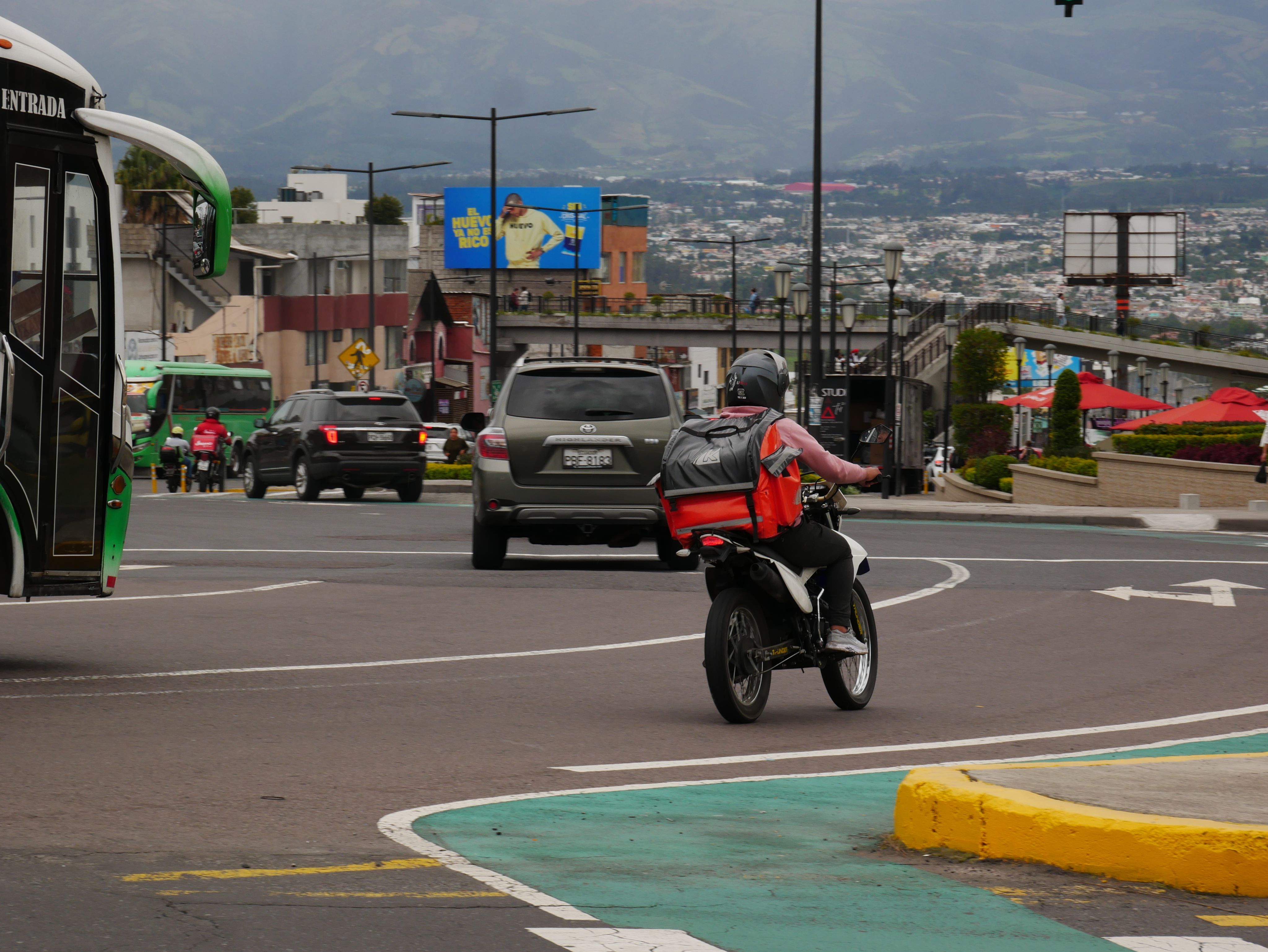Theme in Focus:
Varieties of Exploitation

Are platform workers exploited? The answer to this question depends on how exploitation is defined. The root word ‘exploit’ comes from the Old French esploitier, espleiter, ‘to carry out, perform, accomplish’6. While 'exploit’ had a positive connotation early on, during the 1830s to 1850s the term came to refer more to the ‘productive working’ of something, and accumulated a rather more negative meaning. This negative turn was likely due to the influence of French socialists like Saint Simon and Charles Fourier, and later Karl Marx.
Marx’s conception of exploitation generally refers to exploitation of labour, which takes place in the production process and relies on unpaid labour-time. He also refers to secondary forms of exploitation, which take place outside production and rely on unequal exchange, rents, interest, etc7. Today, in mainstream policy circles, exploitation primarily refers to extreme forms forced labour, labour trafficking and modern slavery. Some of this is the result of the influence of certain schools of neo-classical economics8, that assume all market exchanges are perfectly competitive, reciprocal and voluntary, effectively denying the existence of exploitation. Such approaches ignore the ways in which market power and institutions shape the bargain between labour and capital and in turn, working conditions.
Working conditions on digital labour platforms, and the question of exploitation, have been at the centre of recent academic and policy debates across the world. In Fairwork’s studies of digital labour platforms, we have found strong evidence of a variety of forms of exploitation in different geographical contexts. In the advanced capitalist world of platform labour, these forms of exploitation include unpaid active time, unpaid waiting time, unpaid training time, unpaid transit time between jobs, and unpaid entitlements9. However, there are two forms worker exploitation that are particularly characteristic of platform work: (1) externalisation of production costs (fuel, vehicle insurance, etc.) and (2) the expropriation of data.
Externalising the costs of production onto workers is typically achieved using “self-employment” contracts (which treat every individual as an independent business) and promissory notes (a legally binding contract for payment). For example, workers on digital labour platforms often must use their own means of production – their car when working for Uber, bicycle when working for Deliveroo, and computer and internet when working from home – and shoulder the costs, which creates revenue streams for middlemen or even for the platform itself.
In low- and middle-income countries, workers are subject to weak institutions and lack of enforcement of regulatory standards, and high levels of informality have put gig workers in a vulnerable position. Fairwork has found that in countries like Egypt, Bangladesh, Nigeria, India, Philippines and Singapore, platforms take advantage of loose labour market regulations to externalise risks and costs to workers while retaining their fee and profiting.

RIDESHARING WORKERS WERE OFTEN CAUGHT IN A DEBT TRAP DUE TO PRIMISSORY NOTES, WORK-RELATED COSTS, HIGH PLATFORM COMMISSION FEES, AND THE CUT TAKEN BY
NON-DRIVING PARTNERS





PLATFORMS TAKE ADVANTAGE OF LOOSE LABOUR MARKET REGULATIONS TO EXTERNALISE RISKS AND COSTS TO WORKERS

In Egypt, platforms pay for the cost of the food (to McDonalds, for example) upfront, but workers are treated as middlemen who must pay this cost back to the platforms plus the percentage of the delivery fee. This puts all liability on the worker to collect the cost of the food and the fee from the customer to pay it back to the platform. Workers are forced to sign promissory notes10 as part of their onboarding process. Promissory notes are legally transferable and move with a worker who carries debt from one employer to another. They have a notorious history of trapping workers, especially manual labourers, in intergenerational debt. Similarly, in Nigeria with ride-hailing platforms like Bolt, the app calculates the earnings and what drivers owe to the platform as a percentage of those earnings for using the app. This margin does not consider any mitigating factors like costs of leasing a vehicle from a middleman (a common practice), cost of insurance, maintenance, fuel, or if the customer fails or refuses to pay in full. Often this leads to a persistent level of debt. If workers exceed the platform’s debt threshold, they are deactivated until they can pay it back, creating a form of debt-bonded platform servitude. If there is a problem with the delivery, the worker is liable and must pay out of pocket, ensuring the platform retains its profit and avoids any liability.
Platform debt is an emerging form of exploitation that refers to a situation when gig workers' monthly work-related costs exceed their earnings. Fairwork researchers found that ridesharing workers were often caught in a debt trap due to promissory notes, work-related costs, high platform commission fees, and the cut taken by non-driving partners. In many Asian countries, it is common for gig workers to be contracted to non-driving partners or fleet partners, that is, vehicle owners who rent their cars to gig workers through a private and informal arrangement, which can be exploitative as they appropriate a larger share of their earnings. Platforms abdicate their responsibility to drivers and legal liabilities by allowing such practices. As a result, these gig workers pay commissions to both the platform companies and the non-driving partners.
Our findings from Bangladesh show that the net income deficit of the workers we interviewed ranged between BTD 66,100 to BTD 100,00 (or 533 to 807 GBP). However, indebted workers choose to work for various platforms to generate regular cash flow through established payment processes, complicating the debt trap. Despite the precarity, workers still use digital labour platforms because informal work does not ensure payment. Though trapped in debts that exhibit features of modern slavery, these workers know platforms still provide a regular cash flow. They risk indebtedness for work. Our findings from Egypt, Bangladesh, Nigeria, India, Philippines and Singapore demonstrate that platform debt is a pattern and not an exception.
Finally, there are new forms of secondary exploitation through rents that platforms are increasingly refining, with the datafication of labour leading to the production of intangible assets for the platforms. Datafication refers to the fact that mobile technologies, sensors, and digital infrastructure are now integral to global infrastructure, capturing data about everything from mouse movement to human movement, spoken conversations, financial transactions and collective behaviour. Labour platforms require data supply chains from both workers and consumers to train and develop the AI-driven virtual machinery of their apps. This means workers are not only a resource of profit for capital in the traditional sense but are also contributing an “extra cut” in the form of recorded data about their activities. In other words, platform work is also “data work”. This enables “dual value production”,11 which points to the ways in which intangible assets are transforming value chains through rentierism.1213
Through investigating the various forms of exploitation that occur through digital labour platforms, Fairwork provides opportunities for organised labour, social movements, and political parties to soberly analyse the present and anticipate the futures of capitalism. The platformisation of (infra)structures is reshaping social relations and how labour must respond. AI and data-driven platform infrastructures must be held accountable. Just as capital must be controlled, so too must the flows of data, for the safety and good of all. Without analysis of the way in which platforms are reshaping labour, it will continue to be on the backfoot. Understanding how exploitation occurs is the condition of possibility of overcoming it.
